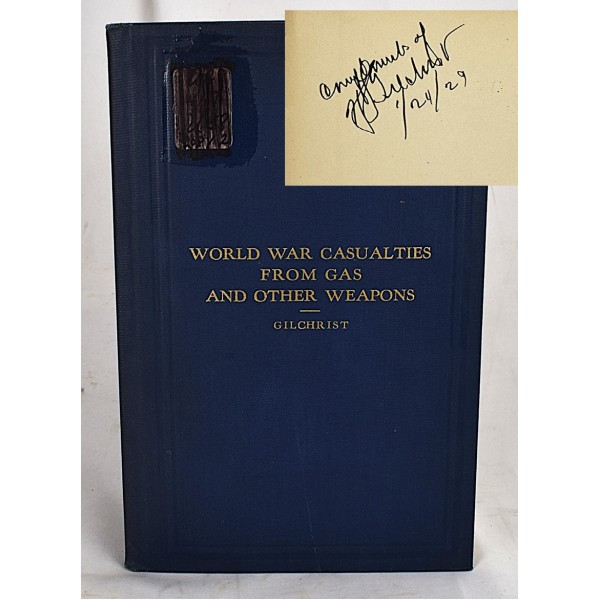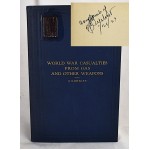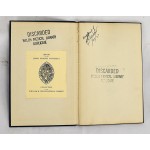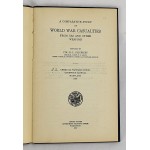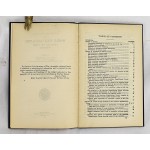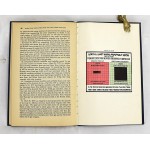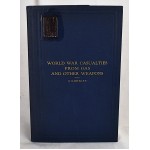Comparative Study of World War Casualties from Gas & Other Weapons (Signed)
Comparative Study of World War Casualties from Gas & Other Weapons (Signed)
Col. H.L. Gilchrist
GPO & Edgewood Arsenal: Chemical Warfare School, 1928.+ Springfield Armory Museu, 1928
Inscribed by H.L. Gilchrist on front end page. Bound in publisher's blue cloth. Gilt lettering on front board. Hardcover. Good binding and cover. Johns Hopkins library stamps and markings. Shelf wear. 51 p., illustrations, 23 cm. *Autographed by author.*
This publication is intended to cover gas as a weapon in war, the resulting after effects, the humaneness of its use and casualties resulting from the use of gas in comparison with casualties from other weapons.
"In May 1917, just over a month after the United States entered the First World War, H.L. Gilchrist was promoted to lieutenant colonel. He took command of the US Army Base Hospital No. 4, also known as the Lakeside Unit, named after the hospital in Cleveland from which its personnel was drawn. Based at a British army hospital near Rouen, France, this unit was the first contingent of the American Expeditionary Forces (AEF) to be transported to Europe. Then, from December 1917 to December 1918, Gilchrist served as the medical director of the AEF Chemical Warfare Division, which entailed frequent visits to the front and allied hospitals. After the Armistice, Herbert Hoover, then director-general of relief for the Supreme Economic Council, personally asked President Woodrow Wilson to detail Lt. Col. Gilchrist and a unit of soldiers to anti-typhus work in Poland, whose eastern borderlands were beginning to suffer the ravages of this lice-borne epidemic, compounded by hunger and miserable living conditions. Gilchrist and his men had their work cut out for them—the unsettled borders of Poland were especially porous in the east, as several million destitute refugees with many vulnerable children among them, who had fled to Russia ahead of the German offensive a few years earlier, began to filter back. Gilchrist and some five hundred volunteer soldiers established delousing stations and coordinated operations with the Polish Army and Ministry of Health as well as the American Red Cross, making use of virtually all of the AEF sanitary supplies remaining in Europe. These materials, sold to Poland by the US Liquidation Board, included: 27 mobile steam laundries; 17 motorized bath plants; hundreds of trucks, ambulances, and cars; tens of thousands of sheets, blankets, pillowcases, and towels; one hundred tons of soap; and even five hundred mules with harnesses and carts. Interrupted by the Polish-Soviet War of 1920, the operation was continued by a somewhat smaller unit headed by Gilchrist until it was disbanded in January 1921. It is safe to say that the mission saved hundreds, if not thousands, of lives and played an important role in establishing the fledgling health services of newly reborn Poland. After his mission to Poland ended, Gilchrist served as the chief of the US Army's Medical Research Division in Washington, DC, and at its Chemical Warfare Service at the Edgewood Arsenal in Maryland, advancing to the rank of colonel and then major general. His final command was as chief of the Chemical Warfare Service from 1929 until his retirement, in 1934. From that point he served as editor of the Military Surgeon until 1940. Harry Gilchrist passed away on December 26, 1943, and is buried at Arlington National Cemetery. A letter in 1934 from then chief of staff Douglas MacArthur listed Gilchrist's numerous awards, including the US Army Distinguished Service Medal, the Purple Heart, the French Legion of Honor, and the Polish Order of Polonia Restituta." - The Hoover Institute
